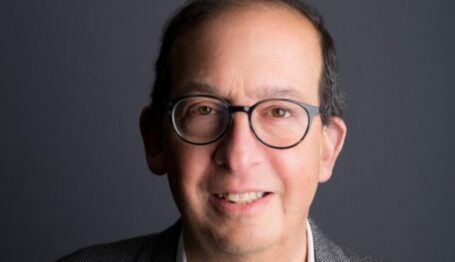Philanthropy
Approaches to Philanthropy: Giving While Living, Donor Intent, and Anonymity
 Image credit: Philanthropy Daily
Image credit: Philanthropy Daily

Crossposted from Philanthropy Daily — article dated December 8, 2017
One problem historians have in writing about donor intent is that many donors do a very poor job in expressing their ideas.
James Buchanan Duke, as far as I know, only published one article in his lifetime. If his Deed of Trust for the Duke Endowment was not as explicit as it was, we would have had very little sense of how Duke wanted his wealth to be used.
By contrast, Chuck Feeney, whose wealth created the Atlantic Philanthropies, has done everything right.
There are many sources for people interested in Feeney’s ideas, beginning with Conor O’Clery’s authorized biography, The Billionaire Who Wasn’t. “Secret Billionaire: The Chuck Feeney Story,” is an hour-long documentary available on YouTube, done by Irish state broadcaster RTE, that includes an extensive interview with Feeney himself.
The Atlantic Philanthropies has also prepared a series of monographs by Tony Proscio and Benjamin Soskis on various aspects of the foundation’s history and Chuck Feeney’s ideas. Their most recent monograph, by Wall Street Journal critic Heidi Waleson and Forbes Media senior editor Steven Bertoni, is half a look at Feeney’s philosophy of giving and half a look at other donors who have created limited-life foundations.
Some parts of this most recent monograph provided details of Feeney’s “Giving While Living” philosophy that were new to me. For example, until the late 1990s Feeney’s giving was done anonymously. The organizations he created (which merged into the Atlantic Philanthropies) were incorporated in Bermuda to preserve secrecy, and grantees that got Feeney’s money had to sign statements that they would preserve anonymity.
Part of the reason, as Conor O’Clery disclosed in his biography, was philosophical; Feeney’s philanthropic advisor, Harvey Dale, notes that many of philanthropy’s greatest thinkers, such as the medieval sage Maimonides, have said that anonymous giving is the best way to give.
But Waleson and Bertoni give two additional reasons why Feeney gave anonymously.
One was because he was worried that if his wealth became public knowledge, his children would be vulnerable to kidnappers. A second is that by being quiet about his wealth, he could make site visits and acquire more honest assessments of potential recipients of his aid than he would if potential grantees realized he was a billionaire.
Another reason for anonymity was to avoid being flooded with grant applications.
“Anonymity also meant that the foundation would not receive requests,” the authors write. “Operating under the radar…would also enable him to find underdog groups, where a little money could go a longer way, which reflected his penchant for value investing, and zigging where others were zagging.”
Feeney also discovered potential recipients of his aid from reading. Although he was born in the U.S., Feeney is a dual citizen of Ireland and the U.S. and has had a deep interest in improving Irish life. From reading an article on the Irish-American Partnership, which tried to advance ties between Irish and American business leaders, Feeney started an investigation which ultimately led to the Atlantic Philanthropies donating $177.8 million to the University of Limerick, which enabled that school to grow substantially, adding many buildings and a new library.
The Atlantic Philanthropies also formed a partnership with the Irish government that led to the creation of the Programme for Research on Third Level Institutions, which was funded with $177 million from Atlantic and $1.1 billion from the Irish government. This organization, which has substantially strengthened research programs at Irish universities, wouldn’t have existed if Chuck Feeney hadn’t been interested in improving Irish higher education.
Waleson and Bertoni address the donor intent crisis at Atlantic Philanthropies, which took place after Gara LaMarche became the foundation’s president in 2007 and Frederick A.O. Schwartz Jr. became chairman of the board in 2008. Feeney thought Atlantic at this time was starting to drift from his ideas:
“Always frugal, he was disturbed by the rising costs of the operation, including its move downtown (in New York City) to a greatly expanded headquarters. Just as critically, he felt that many of the initiatives, particularly those based on funding grassroots movements, lacked the clarity, rigor, and accountability that he expected from all of Atlantic’s work, even those with which he was not personally involved.”
After what I gather was a titanic internal battle, which partially centered on how much power Feeney had in Atlantic Philanthropies, both LaMarche and Schwartz were gone by 2011. Chuck Feeney has been satisfied with Atlantic Philanthropies since 2011.
The second part of the monograph, dealing with how other donors have created limited-life foundations, is less successful because the authors only interview one donor who has put a term limit on his foundation.
Dustin Moskovitz was one of the founding partners of Facebook and owned just over three percent of the company’s shares when Facebook’s IPO happened, making him a billionaire. He and his wife Cari Tuna started the Good Ventures Foundation in 2011, which is now a donor-advised fund at the Silicon Valley Community Foundation. (I wrote about Good Ventures here as part of a piece I wrote on the Effective Altruism movement.)
Tuna, who runs the Good Ventures fund full-time, explained the reasons why she and her husband decided to spend down their fortune in their lifetimes. “One is the good we do by giving today compounds over time. Also, when you plan to spend down in your lifetime, you have much more to work with on an annual basis. Plus, you are not able to ensure that future stewards would do as good a job.”
I wish Waleson and Bertoni had interviewed other donors. I would like to know why the Bloomberg Philanthropies has a term limit and why Bill Gates decided to terminate the Gates Foundation 20 years after the death of he and his wife Melinda.
What is abundantly clear from Waleson and Bertoni’s report is that the rising generation of donors decisively rejects the notion that a perpetual foundation spending relatively tiny parts of their endowment as “patient capital” is the best way to give.
They realize that philanthropic best practices include strong donor control and ensuring that the foundation you create has limited life.
“Feeney’s choice to give all his money away during his lifetime,” the authors conclude, “no longer looks like an outlier, oddball decision, but a remarkably prescient forerunner to the activities of today’s billionaire philanthropists.”
For your free copy of the latest edition of Martin Morse Wooster’s book, How Great Philanthropists Failed & How You Can Succeed at Protecting Your Legacy (read an extract here), email:
Kristen Eastlick
[email protected]


